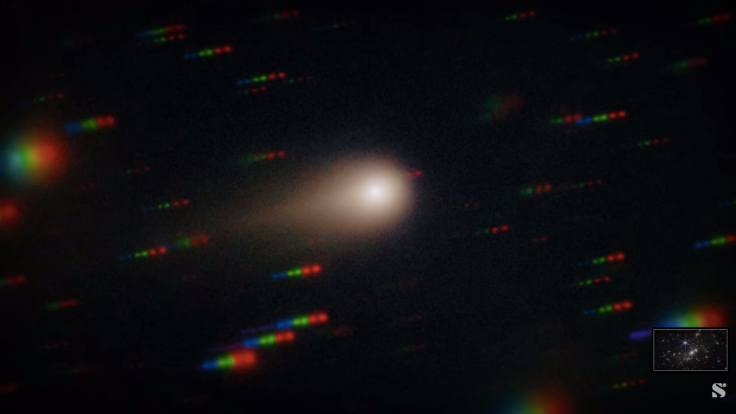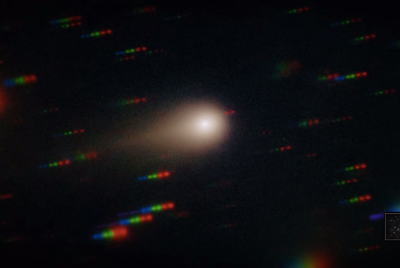Fizzing Through Space: Interstellar Comet 3I/ATLAS Burps Carbon Dioxide Like a Cosmic Soda
Astronomers using JWST and SPHEREx reveal an unprecedented CO₂-rich coma around 3I/ATLAS, offering rare insights into interstellar chemistry and cosmic-ray processing.

Interstellar comet 3I/ATLAS is putting on an unexpected show. New observations from the James Webb Space Telescope (JWST) and NASA's SPHEREx mission reveal that the rare visitor from another star system is releasing enormous amounts of carbon dioxide, creating a vast, glowing cloud around its icy core.
The discovery, which scientists liken to a 'cosmic soda bottle' releasing pressure, has overturned assumptions about what interstellar comets should look like and how they evolve during their long, cold voyages between the stars.
JWST Detects Extreme CO₂ Levels in the Comet's Bright Coma
On 6 August, JWST targeted 3I/ATLAS using its Near-Infrared Spectrograph (NIRSpec). According to NASA Science, the data revealed a CO₂-to-water ratio of roughly 8:1—one of the most extreme ever recorded in a comet.
Researchers said the unusually high carbon dioxide concentration suggests the object may have been exposed to far stronger radiation environments than typical solar-system comets. Another possibility is that the comet formed in a region of its original protoplanetary disk where CO₂ ice froze more readily than water ice, giving it a composition fundamentally different from frozen bodies in our neighbourhood.
SPHEREx Confirms a Massive CO₂ Cloud Stretching Hundreds of Thousands of Kilometres
NASA's upcoming SPHEREx mission independently confirmed the dramatic CO₂ activity, detecting a coma that spans nearly 348,000 kilometres—almost the distance from Earth to the Moon.
Water vapour, on the other hand, appeared scarce. Reports from NASA's coverage of the mission suggest that the comet's chemistry and outgassing behaviour differ sharply from those of typical solar-system comets, providing researchers with a rare glimpse of material shaped around another star.
Scientists say the dominance of CO₂ changes their expectations of how interstellar comets behave and may help identify similar objects in future sky surveys.
Cosmic Rays Likely Altered the Comet's Surface Over Billions of Years
Long-term exposure to galactic cosmic rays may hold the key to the unusual makeup of 3I/ATLAS. According to studies published on arXiv, high-energy particles could have transformed carbon monoxide and other volatile compounds into carbon dioxide during the comet's journey through interstellar space.
Models indicate that a hardened crust 15 to 20 metres thick may have formed over billions of years, rich in CO₂ and complex organic material. Rather than being pristine remnants from a young planetary system, interstellar objects like 3I/ATLAS may carry the scars of deep-space radiation, providing clues about processes that occur far from any star.
Brightening at Perihelion Raises New Scientific Questions
Despite its dramatic activity, 3I/ATLAS remains harmless. The comet will pass no closer than 1.8 astronomical units—around 170 million miles—from Earth.
As it approached perihelion near 30 October at about 1.4 astronomical units from the Sun, the comet brightened sharply. Instruments aboard SOHO, STEREO and GOES-19 recorded the surge, which experts attribute to the rapid sublimation of CO₂ from its irradiated outer layers.
What 3I/ATLAS Could Reveal About Other Star Systems
3I/ATLAS is only the third confirmed interstellar object to enter our solar system, making each observation scientifically invaluable. Ongoing monitoring by JWST, SPHEREx, and the Hubble Space Telescope aims to determine whether deeper layers of the comet contain unaltered material that predates its exposure to cosmic radiation.
Astronomers hope the object will provide rare insights into the chemistry of distant star systems and the physical processes shaping icy bodies as they traverse the galaxy.
© Copyright IBTimes 2025. All rights reserved.




















